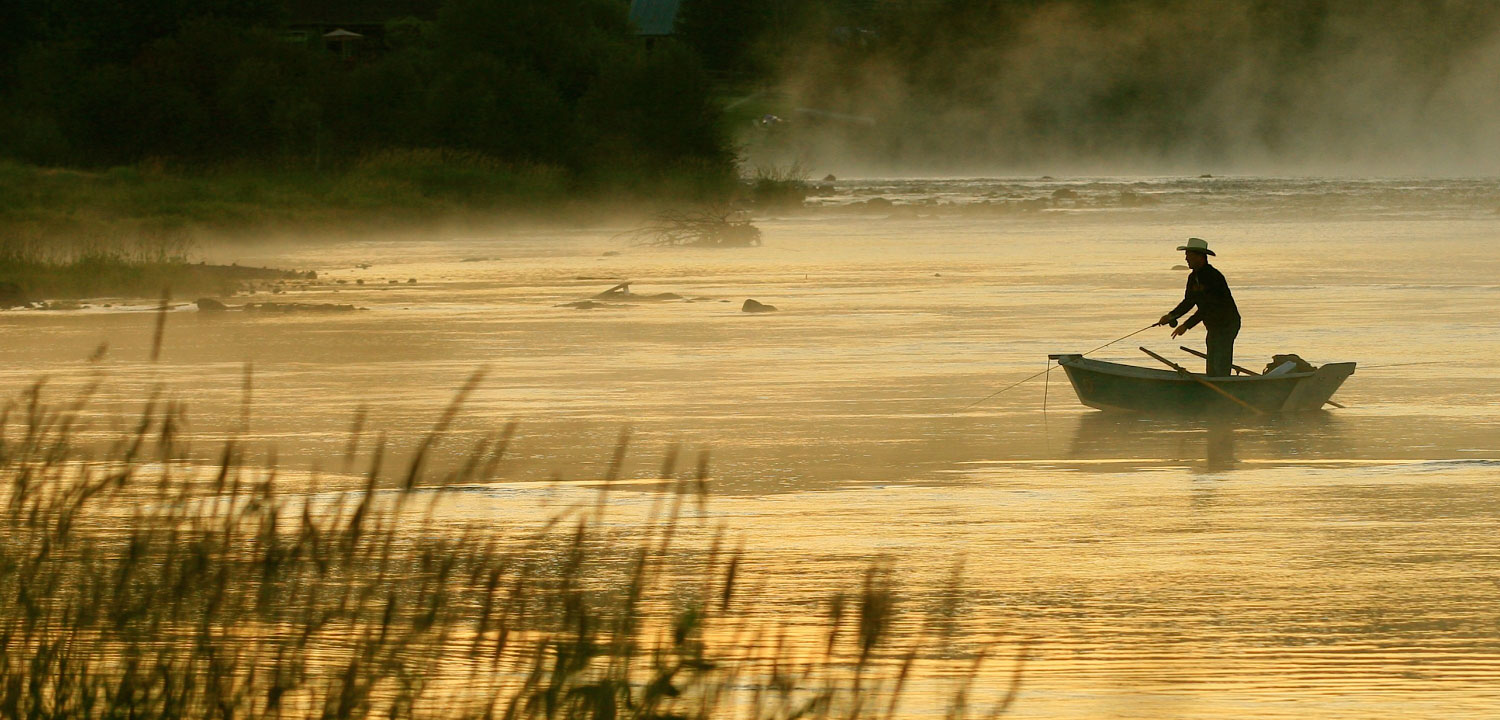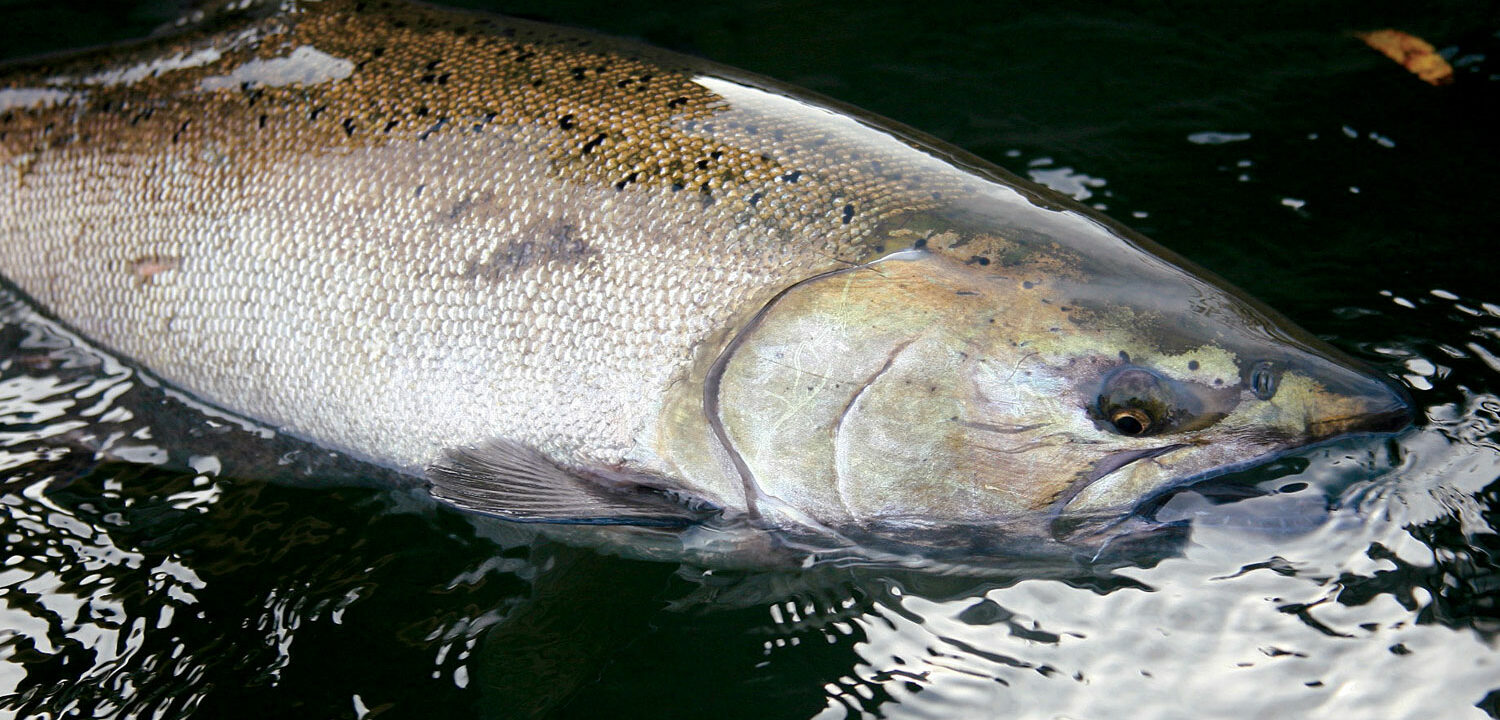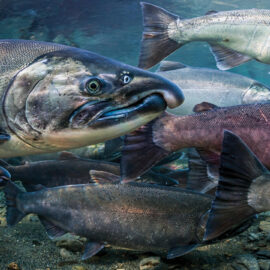Ancient bones and new genetics show spring Chinook derived from a single genetic mutation; once lost, these prized populations can’t easily be recovered.

New research findings from a team led by UC Davis, and including WSC Science Director Matt Sloat, is upending our understanding of spring Chinook. The findings, which point to an isolated genetic mutation as the source of spring migration behavior, helps explain the culturally and ecologically important spring Chinook’s struggles to survive in the face of rapid environmental changes. And the new science points toward the need for novel approaches to restoring spring runs of Chinook, especially as the removal of four Klamath Dams starting in 2021 opens prime spring Chinook habitat.
“These new findings clearly illustrate the challenges of achieving spring Chinook recovery,” said Sloat. “To meet those challenges, we need to protect the unique genetic variation harbored in remaining spring Chinook populations before it is lost forever.”
A study published December 4 in the Proceedings of the National Academy of Sciences by the UC Davis-led group analyzed samples of spring Chinook from ancient middens (refuse heaps) at prime spring fishing spots known to indigenous communities in the upper Klamath – some sites dating back to 3100 BC. The group also looked at Chinook DNA from recent salmon returns in the Rogue and lower Klamath river systems. All found that Chinook running into fresh water in spring have a single genetic mutation that triggers their early migration. Their unique genetic composition strongly suggests that spring Chinook populations cannot readily reemerge from fall run populations, which don’t have the spring run gene.
Previous studies found that spring-run and fall-run Chinook within the same rivers had little overall genetic differentiation and that they could be managed as one unit. But the new study used recent advances in genetic methods to home in on a critical genetic difference between spring-run and fall-run fish.
The genetics help explain why wild spring Chinook are nearly extinct across most of their former range in Washington, Oregon and California.
“Springers” have suffered more acutely than fall Chinook from 150 years of land use changes. Because they use specialized habitat high in watersheds to spawn, logging, mining, agriculture, and – most importantly – dam building have taken a higher toll on them. And because they are unique genetically, spring-run populations are not easily able to reconstitute from other gene pools.
The loss of wild spring-run Chinook is broadly felt. They are highly prized by indigenous cultures on the West Coast, where the fish figure centrally in “first salmon” ceremonies and are treasured for their extra fatty flesh. Other fishermen and seafood-lovers seek out springers for their good-eating qualities. And the fish are ecologically important, delivering marine nutrients higher in the watersheds than their fall-run counterparts, feeding the entire food chain from fir trees to bears to tiny insects.
The new research argues for new conservation approaches to protect existing populations of spring Chinook, including new management regimes in places like Oregon’s Rogue River, where altered river flows because of dams have disproportionately affected spring runs.
In the upper Klamath Basin, the conservation community will need to look at novel paths to restore the specialized “springer gene” to a place where spring Chinook have not swum for a century. Lower Klamath spring Chinook populations, meanwhile, are scarce; the research group found just one percent with the specialized gene among close to 1,000 sampled in two lower Klamath tributaries, the Scott and the Shasta.
“Removal of the Klamath dams presents an extraordinary opportunity to reconnect suitable spring Chinook habitat,” says Sloat. “But the 100 year decline of springers within the basin has been so severe that it will be difficult to reestablish spring Chinook in their historical habitat.”
Without rapidly shifting our approach to protecting and restoring spring Chinook, we may lose this treasured part of the salmon family.





